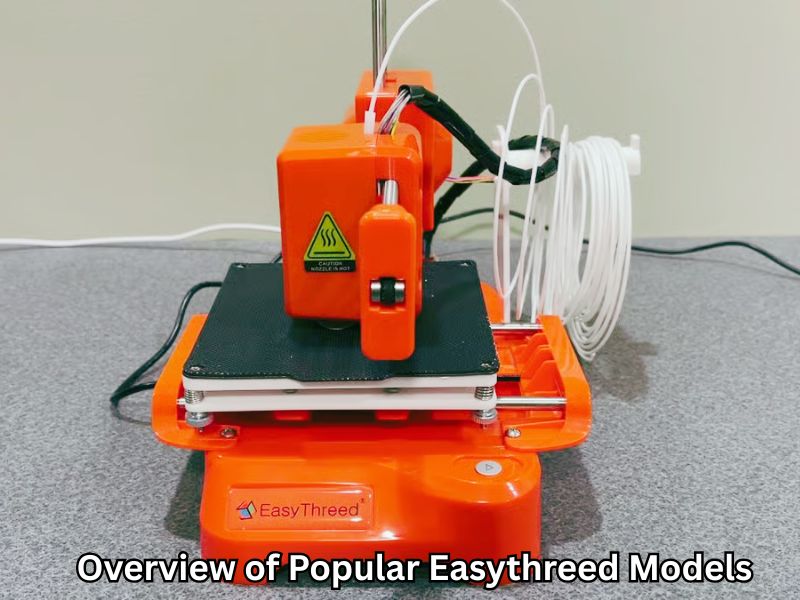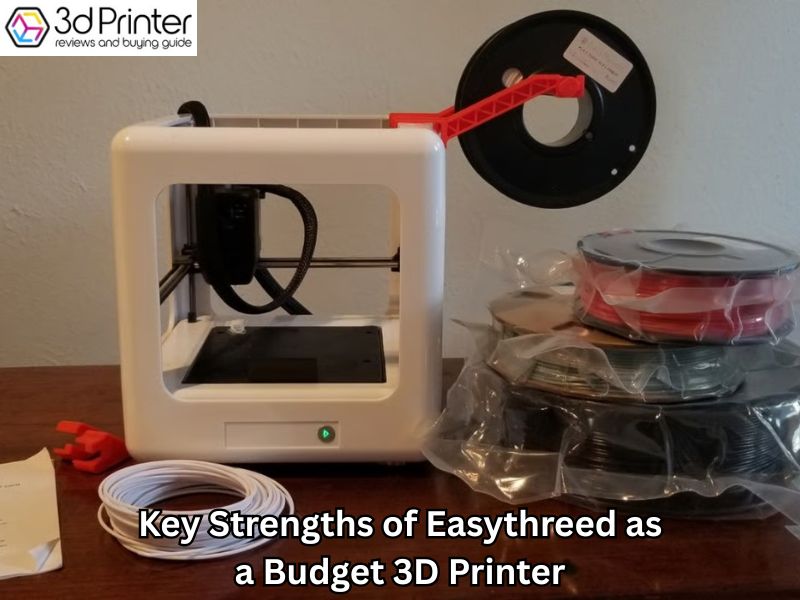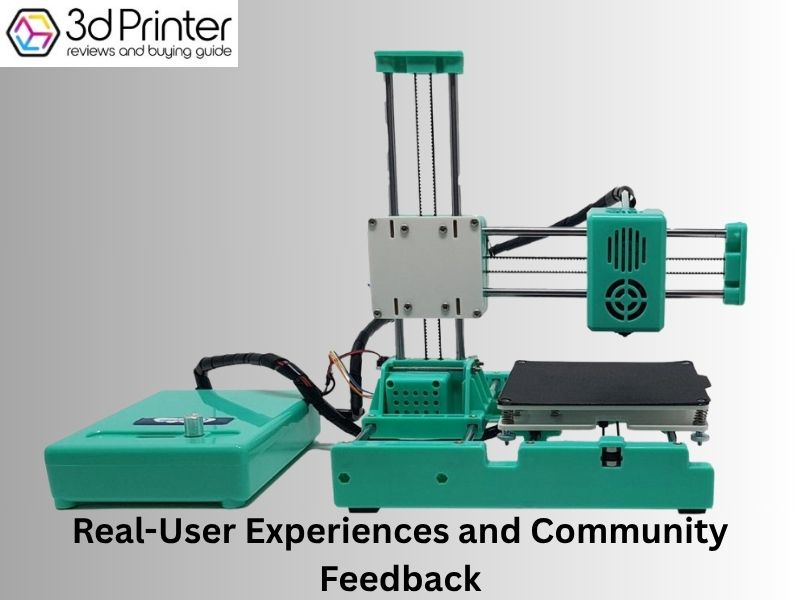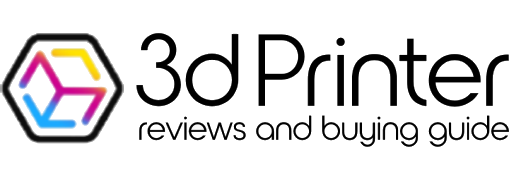From my experience working with many entry-level 3D printer, the Easythreed 3D printer stands out for its affordable price and simple setup. These compact printers are perfect for small projects, learning, or classroom use. While their print size is limited and the quality can vary, they offer excellent value for anyone just starting with 3D printing. If you want a low-cost, beginner-friendly 3D printer, the Easythreed 3D printer is worth considering.

Overview of Popular Easythreed Models That Define the Budget Segment
Easythreed has made a name for itself by offering affordable 3D printers that are beginner-friendly and easy to use. Their compact and budget-friendly models are perfect for hobbyists, students, and anyone curious about 3D printing without spending a lot. While they may not compete with the best 3d printer for small business in terms of size or speed, they shine as low-cost, entry-level options. Let’s explore three popular Easythreed printers that have captured attention in the budget segment.
Easythreed X1 – A Compact 3D Printer Perfect for First-Time Users
The Easythreed 3D printer X1 is a small, space-saving machine with a build area of around 100mm cubed. Its compact size makes it ideal for desks, small rooms, or home workshops. The printer comes assembled, so beginners won’t get overwhelmed during setup. It’s built for straightforward PLA printing, making it a superb starter printer for hobbyists or those new to 3D printing. While it lacks advanced features, its simplicity is a big plus for users wanting an easy way to get started.
Easythreed K7 – Lightweight Mini Printer Under $100 for Easy Experimentation
If you’re looking for a super affordable option, the Easythreed 3D printer K7 is a fantastic choice. Priced under $100, it’s small, light, and easy to carry around. The K7 includes essential accessories like filament and a microSD card preloaded with slicing software. Its tiny build volume suits small prints and basic experiments, making it perfect for beginners who want to test the waters of 3D printing without a significant investment.
Easythreed Nano – Plug-and-Play 3D Printer Made for Kids and Beginners
The Easythreed 3D printer Nano is designed for those who want a hassle-free experience. It arrives fully assembled, so all you need to do is press a button to start printing. This makes it especially popular with parents, teachers, and anyone introducing kids to 3D printing. Its user-friendly design and small size make it perfect for classrooms and creative spaces. While it’s limited to smaller projects, it’s an excellent tool to spark creativity and learning.

Key Strengths of Easythreed as a Budget 3D Printer
Extremely Affordable Entry into 3D Printing
If you’re just starting with 3D printing, the Easythreed 3D printer offers a fantastic way to jump in without spending much. Their printers usually cost between $90 and $150, making them one of the cheapest options you’ll find. This low price makes it a popular choice for students, teachers, and anyone curious about 3D printing. It’s a great way to experiment and learn without a big upfront investment.
Easy Assembly and Straightforward Operation
Easythreed 3d printer models come mostly assembled, so that you won’t need hours of setup or complicated instructions. Most users can unbox, plug in, and start printing quickly. Plus, these printers work well with user-friendly slicing software like Cura and Easyware. That means beginners get simple tools to prepare their 3D models, with the option to explore more advanced settings as they get comfortable.
Great for Basic PLA Printing and Mini Projects
The Easythreed 3d printer is built to handle PLA filament, which is the easiest and safest material for newcomers. Since it doesn’t have a heated bed, it works best with PLA and smaller projects. This printer is perfect for printing tiny toys, mini parts, and basic prototypes. It’s ideal for hobbyists who want to create without wasting much filament or time.
Common Limitations of Easythreed Printers
Pros
- Compact build volume is perfect for small, detailed prints. The 100 × 100 × 100 mm size works well for toys, miniatures, and simple prototypes.
- Good entry point for beginners learning 3D printing basics. The small size keeps filament use low and print times shorter.
- Supports popular slicing software like Cura for better control and customization beyond the basic Easyware slicer.
Cons
- Limited build volume restricts larger or multi-part projects. Users wanting bigger prints must break designs into smaller pieces or upgrade to a larger printer.
- Print quality may require tuning. Some reports of layer shifts or visible surface lines mean beginners might spend time adjusting settings.
- Easyware slicer has occasional language and usability issues. Non-English labels can confuse some users, but Cura offers a smoother alternative.
Easythreed vs. Other Budget 3D Printers: Where It Stands
How Easythreed Compares to Other Entry-Level 3D Printers Under $150
Easythreed printers like the X1 and K7 shine because they’re affordable and straightforward. For under $150, you get a mostly assembled machine that’s ready to print right out of the box. This ease of use makes them perfect for beginners or anyone who wants a hassle-free start with 3D printing. While other budget printers might offer extras like heated beds or larger print sizes, they often require more setup time or technical know-how. Easythreed keeps things straightforward and focuses on small, basic PLA projects, making it a solid choice for hobbyists and newcomers.
When Should You Consider Upgrading to Printers Like the Ender 3?
If you find yourself needing more space for building, more reliable prints, or the ability to work with different materials, it might be time to step up to a printer like the Creality Ender 3. Though it costs more, the Ender 3 offers features like a heated bed and sturdier construction, which help produce better results consistently. It can handle materials beyond PLA, such as ABS and PETG, which makes it ideal for serious DIY projects or small businesses that depend on reliable performance. In short, Easythreed is excellent for getting started and understanding how a 3D Picture Printer Works, but if you want to grow your 3D printing skills or business, upgrading to a more advanced model, such as the Ender 3, is a smart move.

Real-User Experiences and Community Feedback
Beginner Feedback from First-Time Buyers
Many beginners love the Easythreed 3D printer because they are affordable and easy to use. The Easythreed X1 and K7 models often come ready to print with minimal setup. New users find them perfect for learning the basics of 3D printing without feeling overwhelmed. The small size is a bonus for those with limited space. Most users report good print quality when using PLA filament, which is great for simple projects.
That said, some beginners have faced issues like occasional layer shifting or print failures. These problems can happen unexpectedly and sometimes cause frustration. But for the price and ease of use, many find the trade-off acceptable when starting.
Community Concerns About Quality and Long-Term Use
Looking deeper into online communities, some users worry about the Easythreed printer’s durability over time. Because these printers are very affordable, they might need replacement parts sooner than more expensive models. Several users mention that the printer works well for light use but isn’t built to handle daily or high-volume printing jobs.
Also, the small build area and lack of a heated bed limit the kinds of materials and projects you can tackle. If you plan to print larger or more complex designs regularly, Easythreed might not meet your needs in the long run. For casual users and beginners, though, it remains a solid budget-friendly choice.
What’s In The Box and Assembly Experience
The Easythreed X1 arrives in a surprisingly small package, neatly packed in three polystyrene trays. Inside, you’ll find the printer split into three parts, a 10-meter coil of white PLA filament, and a small bag of accessories.
Assembly is quick and simple. It takes less than five minutes to snap the main frame together, attach the Z-axis, secure the filament holder, and add the non-slip feet. All electronics are contained in a separate box connected to the printer with cables.
Build Quality and Design
The X1 has a lightweight, compact design made from molded plastic and steel rods. Although it’s smaller and simpler than more expensive models, it feels sturdy and well-built. The electronics box features just four buttons, a TF card slot, and a power port, with no screen, making it very user-friendly, especially for kids.
Print Bed and Filament Loading
The print bed is small and magnetic, with adjustable thumbscrews for leveling. While a heated bed option is mentioned online, it’s not easily available for purchase. Loading filament is straightforward: simply insert the filament into the extruder tube and press a button to start heating. The design keeps hot parts safely enclosed.
Included Accessories and Software
The package includes a USB TF card reader and a TF card preloaded with test files and Easythreed’s Easyware slicer software. Easyware is simple to use, but is partly in Mandarin, even when set to English. Many users prefer using Cura with an Easythreed profile for more print control.
How Does the Easythreed X1 Print?
The filament holder that comes with the X1 is too small for standard 1kg spools, but it fits smaller 250g spools just fine. Many users replace it with custom spool holders to handle larger spools smoothly.
Since the printer has no screen and limited buttons, it simply prints the most recent file on the TF card when you press the print button. This limits flexibility but keeps the operation very simple.
Print speed is impressive for its size, even faster than an Ender 3 on default settings. The print quality is quite good, with fine layer resolution at 0.15mm using a 0.4mm nozzle. Some vibration is noticeable on larger prints, which is expected given its lightweight design. When working correctly, the X1 can produce decent, detailed prints like the popular 3D Benchy model.
However, occasional glitches happen, causing layer shifts mid-print for no apparent reason. Despite this, the X1 performs well enough for small prints and quick projects, especially when a larger printer isn’t available.
The Verdict
The Easythreed X1 is a solid beginner 3D printer, perfect for kids or hobbyists trying out 3D printing. While it lacks upgrade options and has a small build volume, it reliably handles small PLA prints and offers excellent value for its low price. It’s a good choice for occasional use and simple projects, as long as you can accept its occasional quirks.
Unique Benefits Easythreed Offers That Most Competitors Overlook
How Easythreed 3D Printers Encourage STEAM Learning and Creativity
Easythreed printers are more than just affordable—they’re great teaching tools. Their simple setup makes them ideal for classrooms, after-school clubs, or homeschool projects. Students can learn how to design, model, and print real objects. This hands-on experience builds problem-solving skills and sparks creativity. Many other budget printers miss this mark. But Easythreed gives young makers and beginners an easy entry into 3D printing for education and fun.
Save on Filament with Low-Cost, Small-Scale Printing
One major benefit of Easythreed’s compact design is filament efficiency. These printers use very little material, so each print costs just pennies. That makes it easier to experiment without worrying about waste. For anyone starting, this helps reduce cost while learning. You get more prints out of each roll—something that’s often overlooked in other reviews.
Best Use Cases for Easythreed as a Budget-Friendly 3D Printer
Easythreed is excellent for:
- Mini toys, keychains, and creative gifts
- Quick prototypes for school or home projects
- Decorative prints and fun DIY builds
It’s not ideal for:
- Engineering parts
- Heavy-duty prints
- Batch production or business use
These printers are made for learning and light use, not industrial-level jobs.

How to Get the Most Out of Your Easythreed 3D Printer
Pick the Right Model for Your Needs
- Go with the X1 if you want a basic, compact printer for home or classroom use.
- Choose the K7 for a super-portable and budget-first experience.
- Select the Nano if you want a plug-and-play option with no setup hassles.
Simple Tips to Avoid Print Failures
- Level the bed before every print—it matters.
- Load filament slowly and watch for tangles.
- Start with small prints to test how your settings work.
- Use slower speeds for better results on detailed models.
Easyware vs Cura: Which One Should You Use?
Easyware is simple and works well for first-time users. It’s built for Easythreed models, so the defaults usually just work.
Cura gives more control, but it takes time to dial in settings. It’s a better fit once you’ve learned the basics and want more features.
Final Thought
Easythreed 3D printer, like the X1, K7, and Nano, offer a great starting point for beginners and casual users. They’re simple to use, budget-friendly, and perfect for small projects or creative learning. While the small print area and basic features won’t suit professional tasks, they’re ideal for hobbyists or classrooms wanting hands-on experience. If you’re looking to explore 3D printing without spending much, Easythreed is a reliable first step. For more advanced needs, you can always upgrade later. But for now, this is a smart and affordable way to get started.
Frequently Asked Questions
Who is the Easythreed 3D printer best suited for?
The Easythreed printer is best suited for beginners, kids, students, and casual hobbyists who want an extremely affordable, low-risk entry into 3D printing. It is ideal for creative learning, small projects, mini toys, and quick prototyping.
What are the build volume limitations for Easythreed models like the X1, K7, and Nano?
All popular Easythreed models are very compact and typically offer a small build volume of about 100 x 100 x 100 mm. This size is perfect for small prints but restricts users from printing larger objects, which would need to be broken into smaller pieces.
What type of filament works best with Easythreed printers?
These printers are designed to work primarily with PLA filament. Because Easythreed models lack a heated bed, they cannot effectively print materials like ABS or PETG, which require higher temperatures and better bed adhesion.
How easy is the Easythreed printer to set up?
It is very easy to set up. Most Easythreed models, such as the X1 and Nano, arrive partially or fully assembled. Users can typically unbox, plug in, and begin printing in under five minutes, making them truly plug-and-play.
What is the expected print quality for a budget machine like the Easythreed?
The print quality is considered decent for the price. The machine can produce fine layer resolution (e.g., 0.15mm) and detailed small prints. However, users should expect to spend some time adjusting settings and may encounter occasional issues like layer shifts, which are common trade-offs for such a low-cost, lightweight printer.
